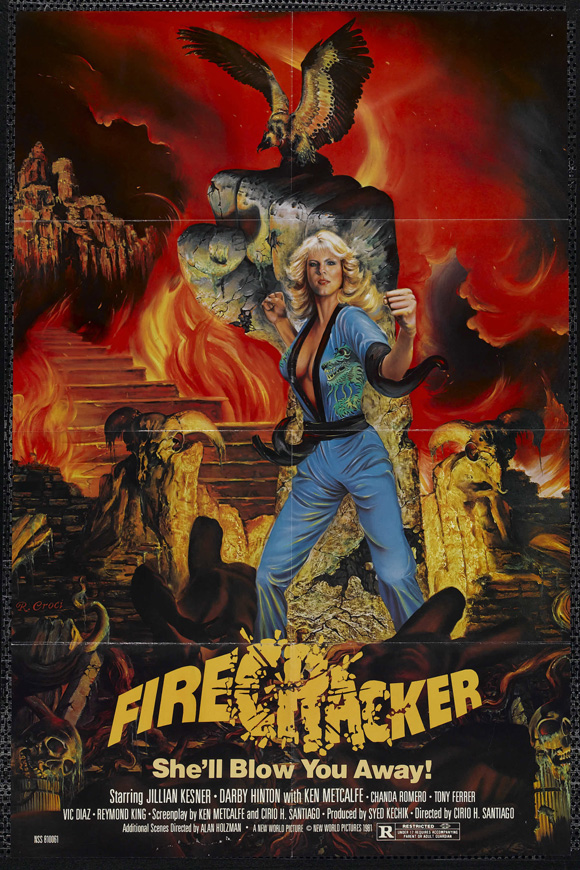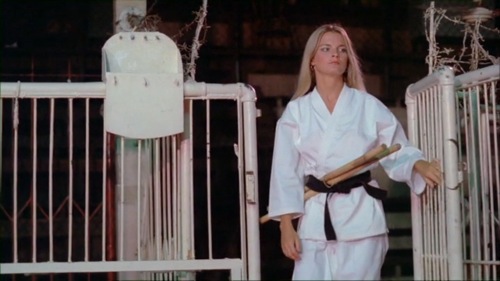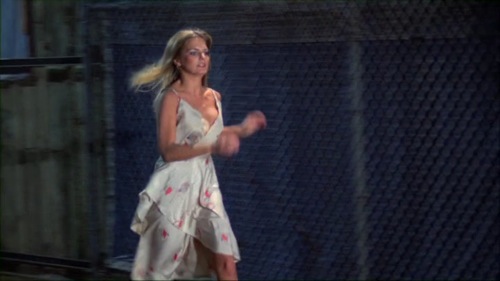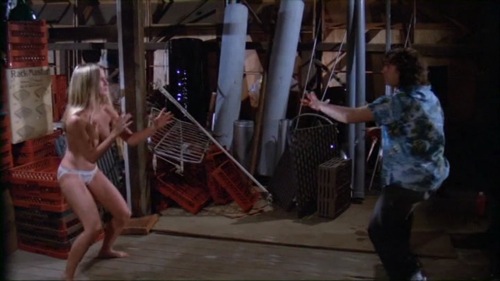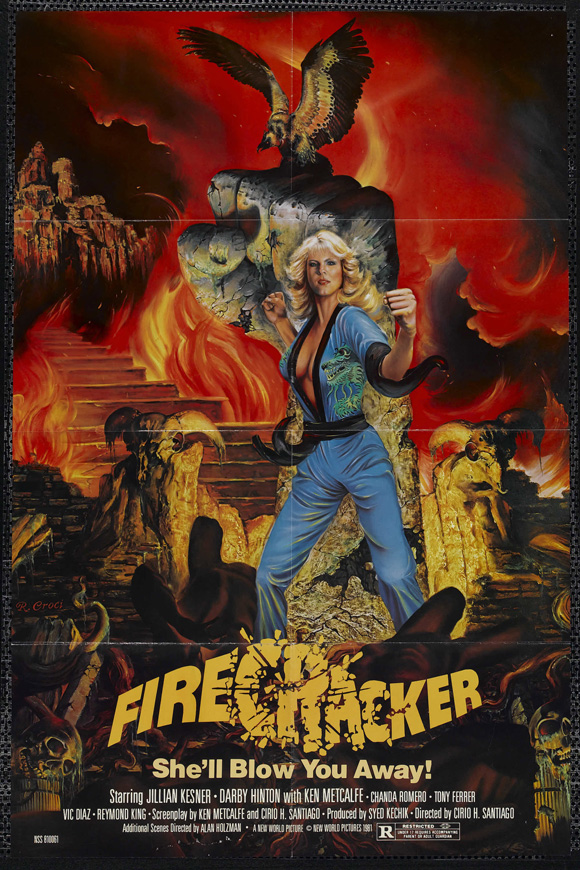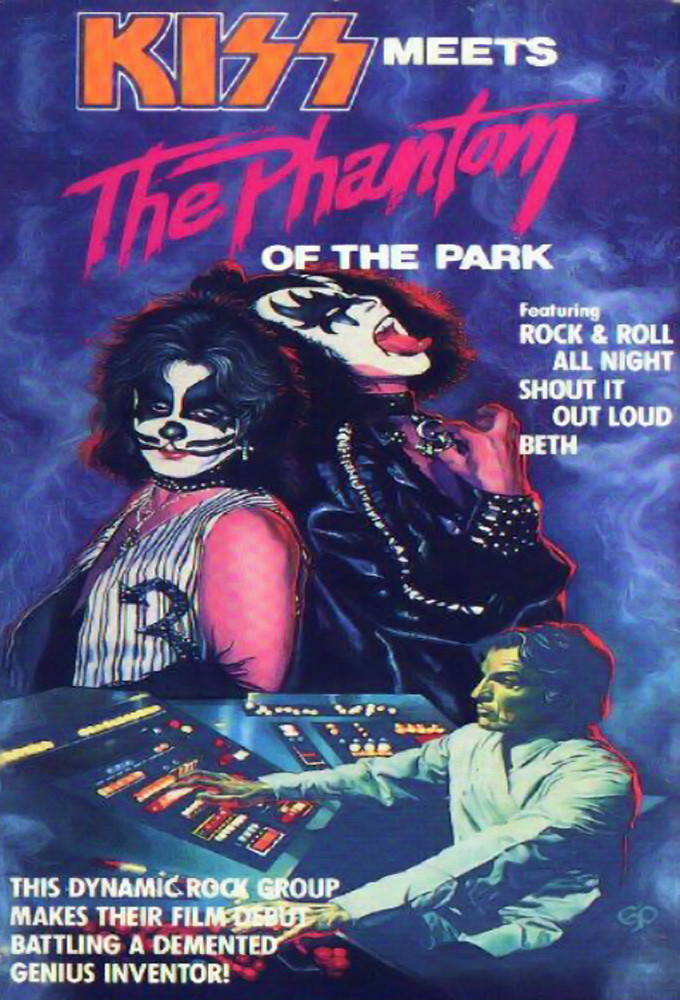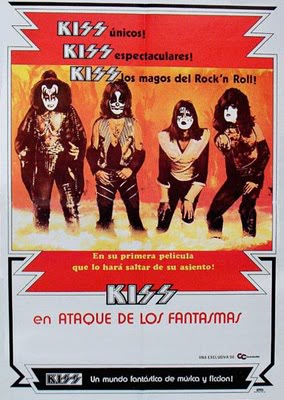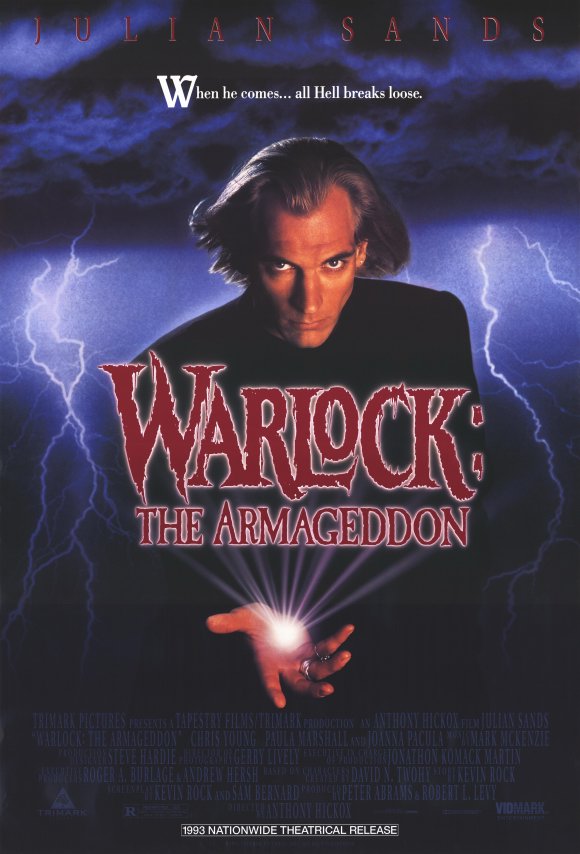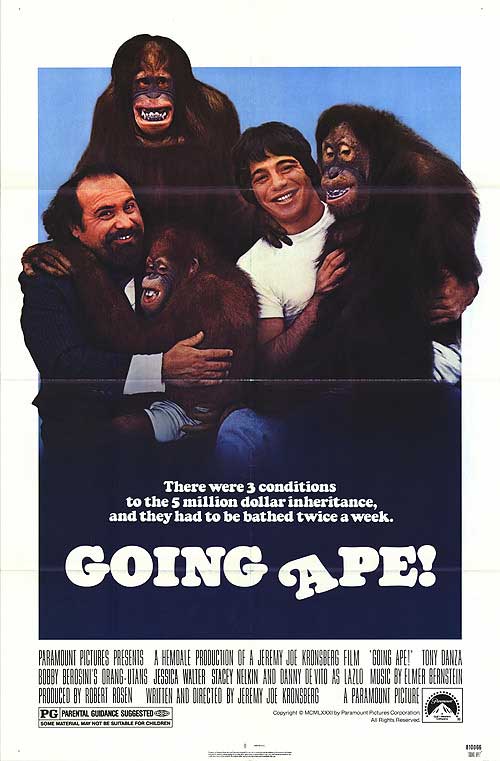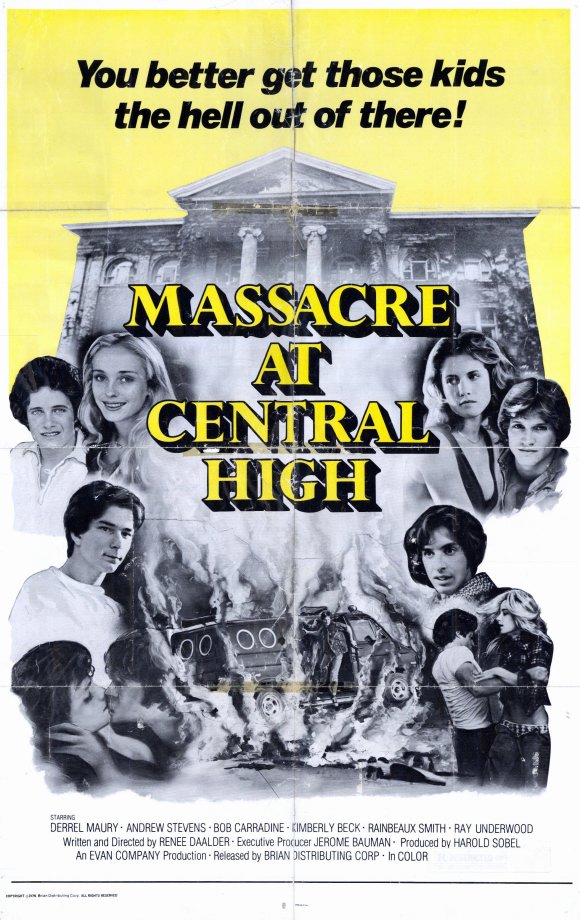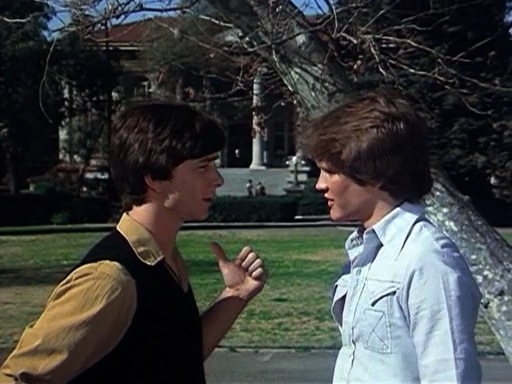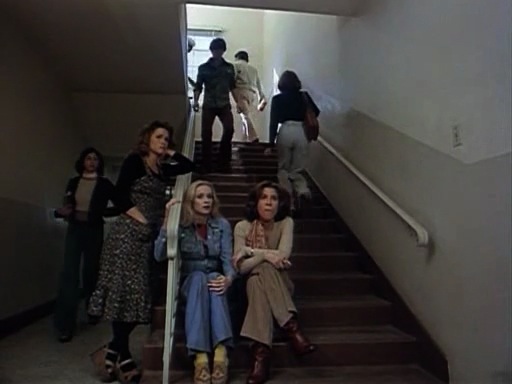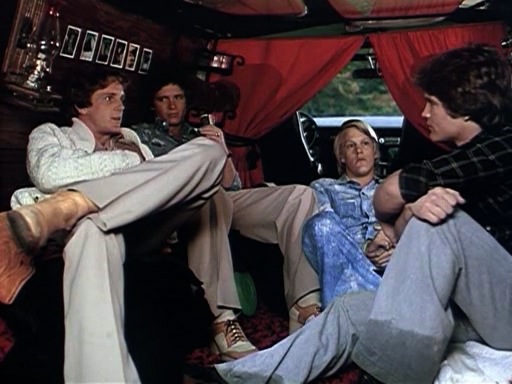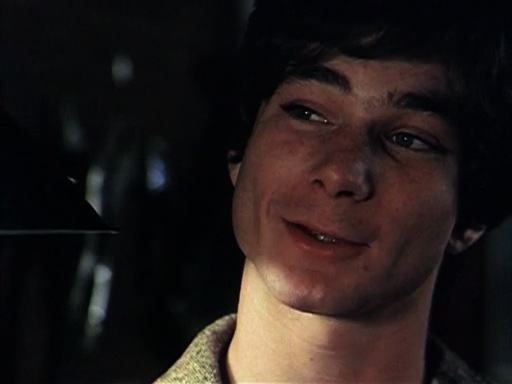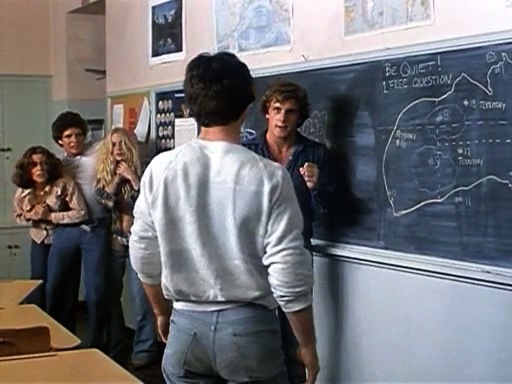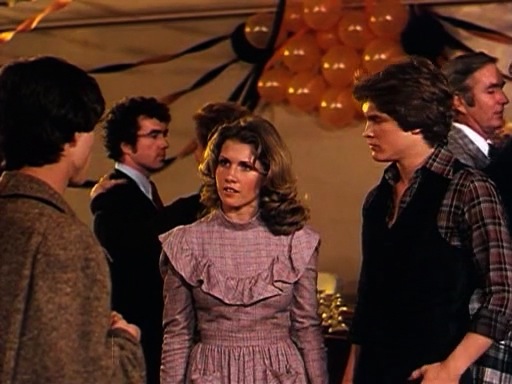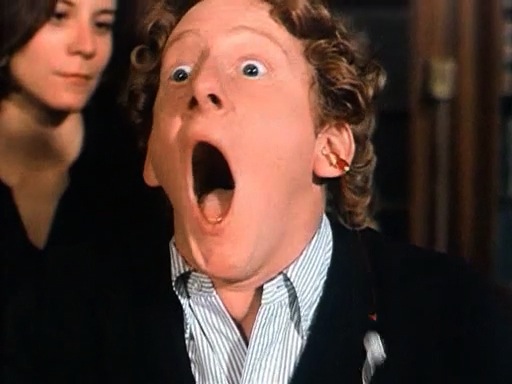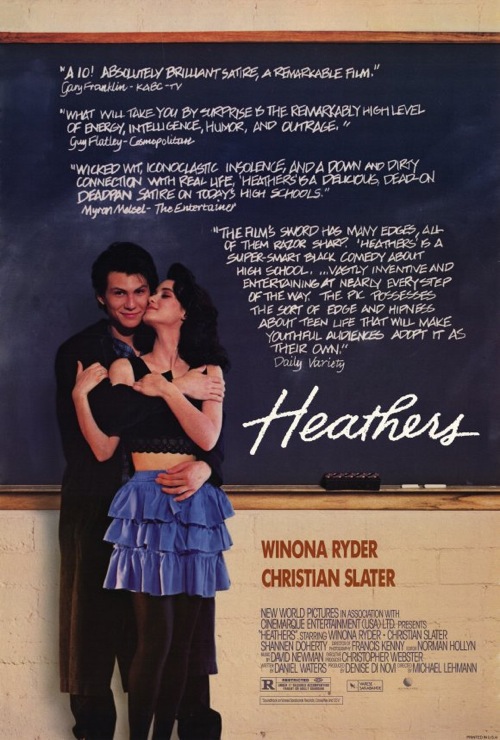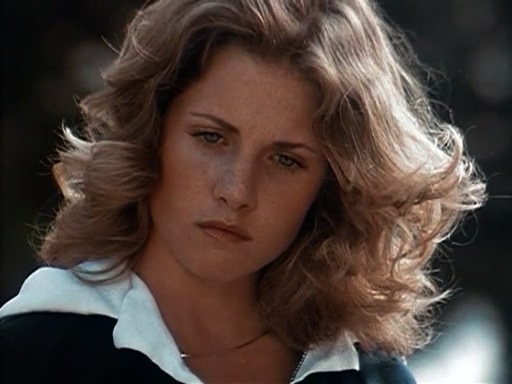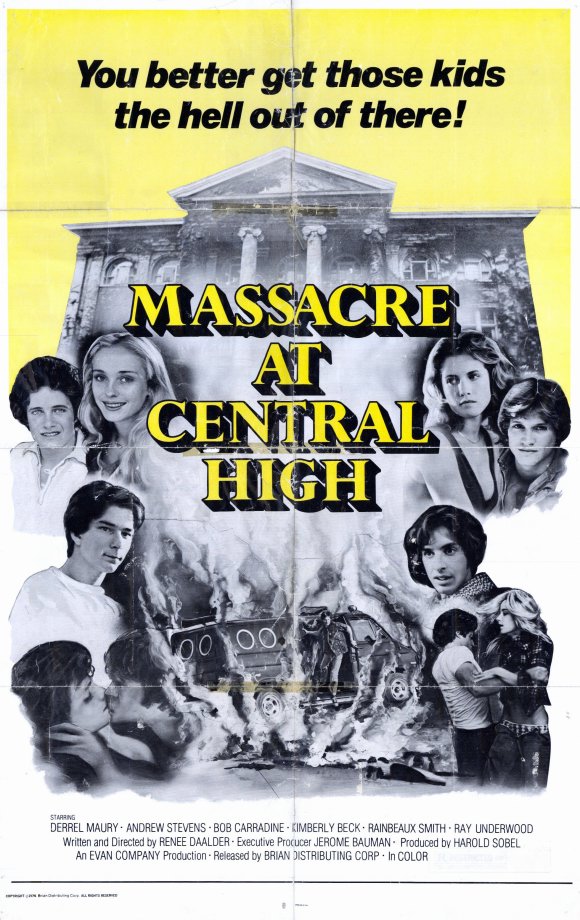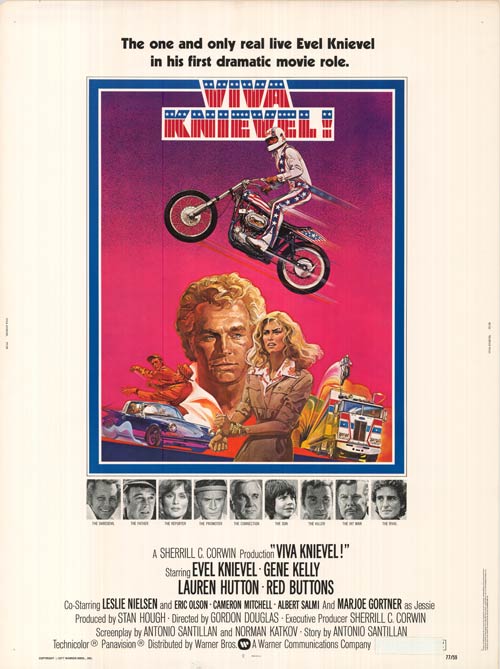B-MOVIE BULLSH*T - Part Eleven "Snap! Crackle! Flop!"
 Monday, November 21, 2011 at 6:00AM
Monday, November 21, 2011 at 6:00AM B-Movie Bullsh*t
Part Eleven
Firecracker
(1981)
Synopsis
American karate champ/instructor Susanne Carter has come to the Philippines to find her missing sister, Bonnie. Her investigation leads her to a drug ring run by Erik, who also holds secret martial art matches where local fighters battle to the death. His champion and lackey is a blond American named Chuck. Chuck’s immediately intrigued by the other hot blond in his midst, and learns she has the black belt goods. Erik tries to convince Susanne to take part in his deadly fights, but she tells him she doesn’t think she could kill a man. Bonnie’s body is dragged from a local river, and a distraught Susanne runs straight to Chuck’s penis. Their romance proves short-lived, though, when an undercover detective tells Susanne that Chuck was the one who killed her sister. Susanne finds Bonnie’s bracelet in Chuck’s apartment and knows what she has to do. She calls Erik and tells him she’s ready to fight in his ring, so long as she can do so under her terms. He agrees, not realizing that her terms mean she will only fight her sister’s murderer. Chuck is shocked to learn that his new fuck-buddy is determined to fight him to the death. In the ring he deliberately goes easy on her and at one-point stops short when he has the chance to kill her. Susanne is not so merciful; when her chance arises, she drives two sticks into her former lover’s eyes, avenging Bonnie’s death.
If you haven’t gotten around to seeing the wonderful new documentary Machete Maidens, I will forgive you if you stop reading this and do so immediately. From the same filmmakers who gave us the equally awesome Not Quite Hollywood (about Australia’s 70s/80s exploitation film boom), Maidens is devoted to the low budget exploitation films made in the Philippines during that same period. Watching it will delight anyone who cares even a little about low budget genre filmmaking, although I would advise that you avoid my mistake of doing so in an airport while waiting for a flight, since virtually every film clip shown in the film seems to have at least one naked woman in it.
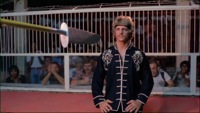 Among these many, many naked women was an attractive blond lass named Jillian Kesner, whose appearance was justified thanks to her starring role in a Roger Corman production directed by Filipino filmmaking legend, Cirio H. Santiago. In the clip that appeared in the film, Jillian was shown exercising her karate skills while clad in only a pair of white panties. Needless to say, this made me want to see Firecracker very much. Fortunately for me, the good folks at Shout Company (whose recent spate of Corman releases represent the best thing happening in home video at the moment) allowed the film to make its DVD debut this month in a set that also included the butt-kicking babe flicks T.N.T. Jackson and Too Hot To Handle.
Among these many, many naked women was an attractive blond lass named Jillian Kesner, whose appearance was justified thanks to her starring role in a Roger Corman production directed by Filipino filmmaking legend, Cirio H. Santiago. In the clip that appeared in the film, Jillian was shown exercising her karate skills while clad in only a pair of white panties. Needless to say, this made me want to see Firecracker very much. Fortunately for me, the good folks at Shout Company (whose recent spate of Corman releases represent the best thing happening in home video at the moment) allowed the film to make its DVD debut this month in a set that also included the butt-kicking babe flicks T.N.T. Jackson and Too Hot To Handle.
And having just watched the film, I can happily report that it didn’t let me down. But then, that’s because I wasn’t expecting anything close to resembling a good film. That’s because Santiago is much like a Filipino Jesus Franco—his legend has everything to do with his productivity and ubiquity and nothing to do with the actual quality of his films. Even at their best, his films kinda suck. At their worst, even Roger Corman worried they might be unreleasable—although that didn’t seem to stop him.
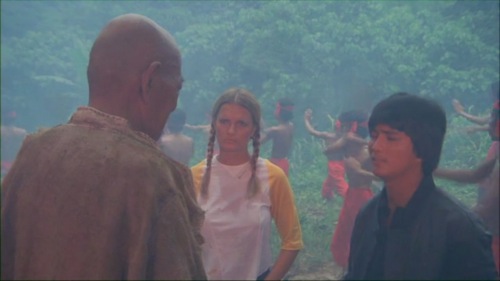 (According to the commentary on Maidens, Joe Dante--the director of Gremlins--insisted that Santiago’s Cover Girl Models was the worst film he saw during his tenure as Corman’s trailer editor.)
(According to the commentary on Maidens, Joe Dante--the director of Gremlins--insisted that Santiago’s Cover Girl Models was the worst film he saw during his tenure as Corman’s trailer editor.)
The best that can be said for Firecracker is that it’s pretty coherent and always in-focus (claims that can’t be made for every Santiago effort). In fact, there are actually three very entertaining scenes in the film. The problem is that two of those scenes actually fuck up what negligible plot the film manages to have.
I’ve already mentioned the scene where Susanne kicks ass without the benefit of clothing. It comes just after the scene where Eric the drug dealer invites Susanne to fight in one of his secret matches. She tells him she doesn’t think she can, and then the movie cuts to her getting out of a cab—apparently on her way home.
As she walks down the street, she catches the attention of two street thugs, who decide to get their rape-on. Instead of kicking their butts, as you would expect a black belt karate expert who’s just been offered a chance to engage in deadly combat for cash, she instead runs like a pretty blond girl in a completely different movie. As she runs, her skirt becomes snared on a fence, forcing her to abandon it. Thus unclad, she makes it into a factory where she begs a security guard to help her. He does his best, but is soon killed by the thugs. They chase her around the building, where a similar wardrobe snare-up causes her to abandon her top. She manages to fatally dispatch one of her wannabe rapists with a circular saw, while his buddy slices the front half of her bra in two. Now topless, she finally starts to fight the guy the way we kinda expected her to in the very beginning, and eventually takes him down.
All in all, it’s a pretty great exploitation movie moment. The problem is that it was clearly added to the film after the movie had already been shot. The evidence is pretty insurmountable, starting with the fact that it’s the only scene devoid of a single Filipino actor (including the cab driver, who's very clearly a white dude), which suggests to me that it was shot in the States. That and the fact that it seems a bit too competently done for Santiago to have been responsible for it.
This wouldn’t be a problem if the scene didn’t feature Susanne acting completely out of character. Before this we’ve already seen her take on dangerous dudes without breaking a sweat (including one scene where she grabs a deadly snake and flings it at Vic Diaz, the guy who played the gay prison guard in The Big Bird Cage), so it’s impossible to dramatically justify her decision to flee in this instance. That said, it does make sense from a production standpoint, since the only major drawback of filming Kesner without her clothes on is that it becomes impossible for the dude in a blond wig who’s been doubling all of her previous fight scenes to do so here. For that reason her fight choreography had to be kept to a minimum since she had to do all of it herself.
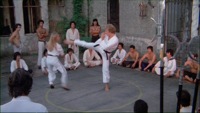 Even worse, though, is how the scene totally screws up the little bit of a character arc Santiago and co-screenwriter Ken Metcalfe (who also plays Eric) managed to come up for her. In the scene just before this one, we see Susanne tell Eric she doesn’t think she can kill someone, a declaration I suspect was supposed to pay off in the final fight with Chuck, where she dramatically proves she can and without remorse.
Even worse, though, is how the scene totally screws up the little bit of a character arc Santiago and co-screenwriter Ken Metcalfe (who also plays Eric) managed to come up for her. In the scene just before this one, we see Susanne tell Eric she doesn’t think she can kill someone, a declaration I suspect was supposed to pay off in the final fight with Chuck, where she dramatically proves she can and without remorse.
Unfortunately the added(?) topless fight scene ruins this by showing us Susanne killing someone immediately after she said she couldn’t. Because of this her killing Chuck (played by Malibu Express's Darby Hinton in a very fun and moustachy performance) at the end of the movie doesn’t feel as significant as it should and robs the moment of much of its potential impact.
(Speaking of the scene where Susanne kills Chuck, it does seem weird that Santiago and Metcalfe chose to make him so reluctant to fight her. Based on what we’ve seen of him, his genuine affection for her seems out of character and—oddly—makes him seem more sympathetic in a scene where we should just want to see him straight up murdered. Ignoring his attempts at mercy does make Susanne more of a badass, but it also makes her seem like a dick. It’s definitely a problem we’d never see in a Chuck Norris movie.)
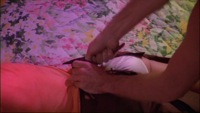 The other questionable scene might have been part of the original production, but that still doesn’t justify it. In it Susanne has just identified her sister’s body at the morgue and runs to Chuck to take comfort in his arms (and cock). What follows is an extremely long and bizarre sex scene where four minutes (in a 77 minute movie) is spent showing the two of them cutting off each other’s clothes in real-time detail.
The other questionable scene might have been part of the original production, but that still doesn’t justify it. In it Susanne has just identified her sister’s body at the morgue and runs to Chuck to take comfort in his arms (and cock). What follows is an extremely long and bizarre sex scene where four minutes (in a 77 minute movie) is spent showing the two of them cutting off each other’s clothes in real-time detail.
Truthfully, it’s a fun scene, but it comes far too late in the film. By this point the only possible reason Susanne hasn’t made the connection between her sister’s death and Chuck’s drug dealing shenanigans is because she’s a complete idiot. Had the same scene appeared earlier in the film, this wouldn’t have been an issue, but at that moment in the picture it’s utterly ridiculous.
But as troubling as these scenes are, I know exactly why they’ve been included. It’s because without them, the film would come in at less than 70 minutes long and—much more importantly—would be robbed of all of its nudity.
The result, then, is an already questionable film undone by two of the three scenes that marginally justify its existence. Leaving only one utterly unspoiled moment of perfection. "And what," you ask, "would that be?"
Enjoy:

